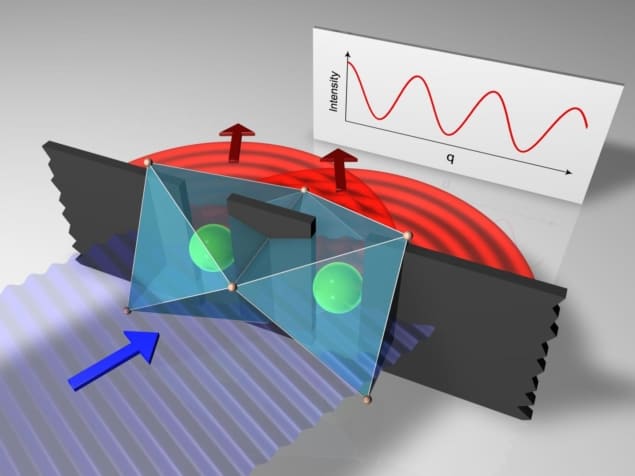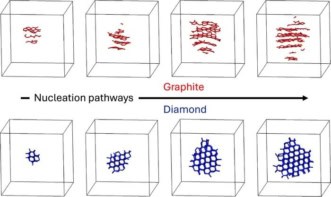
A new twist on the classic Young’s double-slit experiment has been performed by an international team of physicists, who have measured interference in resonant inelastic X-ray scattering (RIXS). The experiment provides important insights into the symmetry and character of electronic excitations in solids and could provide scientists with a useful tool for probing complex materials.
In his original experiment done in 1801, Thomas Young placed two slits a variable distance apart, illuminated them with light, and projected the light emerging from the slits onto a screen. When the slits were far apart, he simply observed two patches of light. When he brought the slits closer together, however, he noticed a series of bright and dark fringes on the screen. He concluded these were caused by constructive and destructive interference between the light from each slit. This provided crucial evidence that light comprised waves, and later experiments using beams of particles such as electrons confirmed the wave-particle duality of quantum mechanics.
The traditional double-slit experiment is an “elastic” process, which means that no energy is exchanged between the light and the slits. This is unlike RIXS, which is a relatively new and rapidly developing “inelastic” technique that analyses the energy lost by X-ray photons when they scatter from a material. Energy is lost to electronic excitations and therefore a RIXS energy spectrum provides valuable information about the intrinsic properties of materials.
Dimers as double slits
But that is not the end of the story because the interference of scattered X-rays should carry additional information about the target material. In 1994, Faris Gel’mukhanov and Hans Ågren predicted that it should be possible to disentangle the symmetry of electronic excitations using the interference patterns observable in RIXS from gaseous molecular dimers. In 1995, Yanjun Ma and Martin Blume beautifully rephrased this in terms of the double-slit experiment. The two atoms of a dimer would act as a double slit and interference occurs if the excitation is delocalized over both atoms. Until now, however, this effect has not been observed in the lab because the random orientation of gas molecules tends to blur the interference pattern.
“RIXS is well understood, but a clear realization of a spatial double-slit interference was still missing,” explains Markus Grüninger of the University of Cologne, who led the latest research.
Grüninger and colleagues eliminated the problem of random orientation by growing a crystal of an iridium oxide-based material that contains dimers of iridium atoms with a well-defined orientation. The researchers irradiated the crystal with X-rays from the European Synchrotron Radiation Facility in Grenoble. Choosing the appropriate X-ray energy, confines scattering to the iridium atoms and creates excitations within individual dimers. By recording the scattered X-rays, the researchers reconstructed the interference pattern for each excitation.
Out of phase
Young’s experiment gives an intensity maximum at the midpoint on the screen between the two slits as the two path lengths are equal and add in phase. For atoms, the situation is more complex. The phase of an emitted photon depends on the phase of the wavefunction at the point of emission. Therefore, emission from an antisymmetric dimer state occurs in antiphase from the two atoms and produces an intensity minimum at the midpoint.

X-ray scattering reveals plasmons in high-temperature superconductors
“In terms of symmetry, all dimer states are either even or odd,” explains Grüninger, “This technique determines the symmetry of the excitations which helps us to characterize them. For the iridium dimers we learned that the states are spin-orbit entangled, in contrast to previous assumptions for dimers. This is of general interest for related iridate compounds that are studied as promising candidates for new quantum states of matter: quantum spin liquids with fractional excitations.” The double slit serves as the most fundamental model system, the researchers now hope to study more complex, multi-atomic states using the same technique.
Stephen Kevan of Lawrence Berkeley National Laboratory in California, who was not involved, says that, initially, many researchers believed that inelastic scattering would not conserve momentum at all. Numerous experiments have refuted this, so he says that “in one sense this result, which demonstrates transverse coherence – at least between two atoms – shouldn’t be that surprising.” Nevertheless, he describes the finding as “important” as “some will say ‘I thought it was obvious’ and others will say ‘My goodness! I thought it was the other way around.'”
The research is described in Science Advances.



